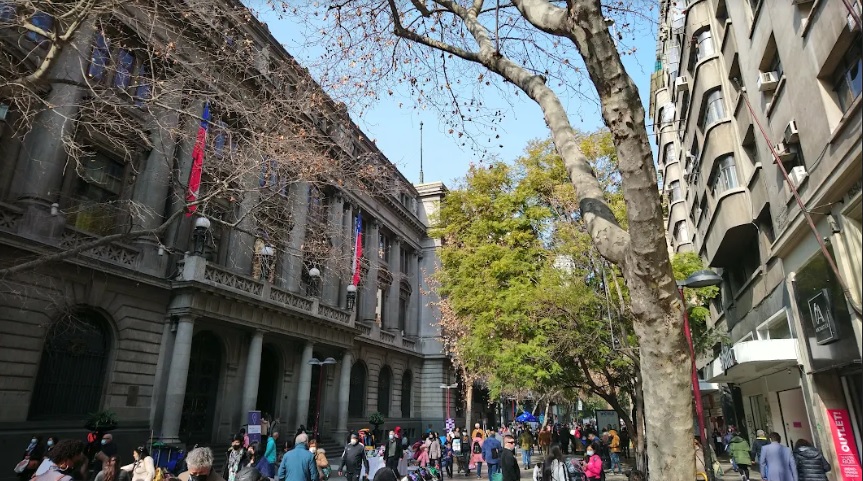Formerly called Calle Lázaro de Aránguiz.
One of the first houses in Santiago was built in 1552, when Rodrigo de Araya, Mayor of Santiago, received the first plot of land in this sector. Despite this fact, the street was not named after him, but rather after another neighbor, the notary Lázaro de Aránguiz.
It was not until the arrival of the Ahumada family that it was named after them. This family’s house was one of the few to be left standing after the earthquake of 1647, which devastated the town of Santiago. In view of the circumstances, the locals in the sector wanted to transfer the town to Talagante or Quillota, but thanks to the influence of the Ahumada family, the town stayed where it was and, at the time, people began to talk of “Calle de Ahumada”.
This was one of the first streets to have a night watchmen service and one of the first premises which was authorized to operate as a billiard establishment, café and public amusement house.
In the second half of the 19th century, Mayor Francisco de La Lastra set out to remove all traces of the Spanish presence from the names of the streets, and renamed Ayacucho the streets then known as Ahumada and Puente. However, the decree was not well accepted by the Santiago locals.
As time went on, the street became known as a fashionable trading center, with large shop windows and bookshops with the latest works from the Old World. In some of the mansions or along the narrow streets were premises with fine wooden cabinets, imported lamps and fine crystals.
After the 1920s and 1930s, the traditional mansions were torn down and replaced by office blocks with shops on the ground floor, which preserved the commercial nature of the sector.
It was transformed into a pedestrian walkway in 1977, and remodeled in 1999.
Photography. Lorena Bruna, Tour Guide

